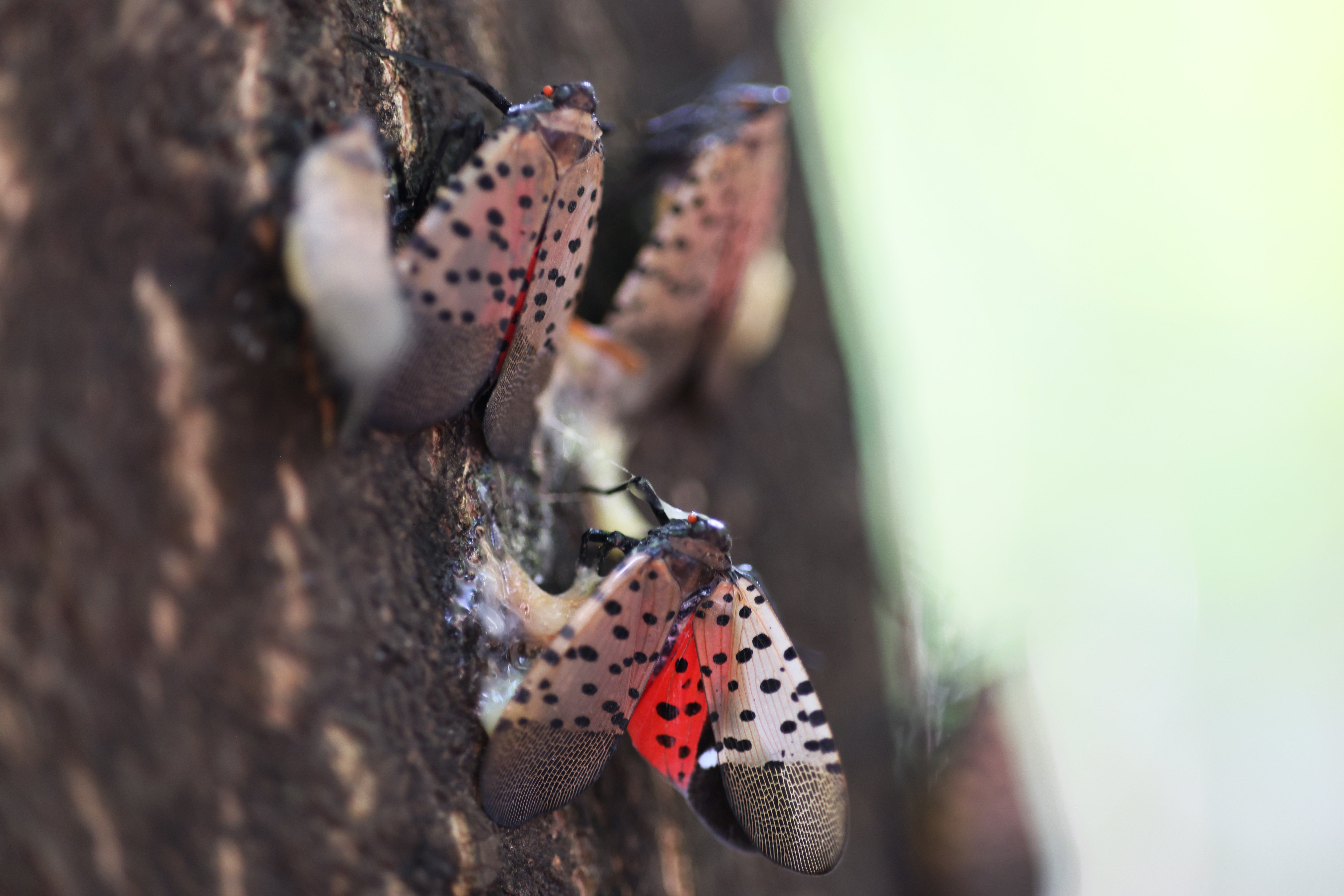There’s a new hero in the fight against invasive spotted lanternflies: your dogs.
For the first time, people and their pups were able to effectively detect the eggs that hatch the pesky Asian pests, which have the ability to damage trees, crops, and other plants. The egg masses – including 30 to 50 eggs – are notoriously hard to find, according to researchers at Virginia Tech and Texas Tech Universities.
“They often resemble mud smears or lichens and are tucked into bark crevices, cracks, or hidden undersides,” Mizuho Nita, a plant pathologist at Virginia Tech’s Alson H. Smith Jr. Agricultural Research and Extension Center, said in a statement. “Finding them is like searching for a needle in a haystack.”
More than 180 teams of dogs of different breeds and their owners were given non-hatching egg masses to train with at home or in small groups. Following several months of training, the dogs were tested in indoors and outdoor environments.
The canines had to complete an odor recognition test, distinguishing the box with the spotted lanternfly eggs from multiple boxes that contained different items. Those that passed the test, advanced to a field test where they were required to identify the scent in an outdoor environment with competing smells.
Of the dogs that passed both tests, 92 percent were successful in finding the eggs. Some 82 percent of the time, the dogs correctly identified the egg boxes. While that percentage dropped to 61 percent outdoors, that’s still better than many human searches, the researchers noted.
Dogs have a sense of smell that’s tens of thousands of times more acute than those of humans. They can also find the eggs without disturbing the environment. While professional dogs can do this, there aren’t nearly enough of them and they’re expensive.
.jpeg)
The project, which was supported by the Department of Agriculture and published in the journal Zoological Science, could also be helpful for detecting powdery mildew with over 90 percent accuracy, according to a separate study authored by the researchers. Powdery mildew is a fungal disease that impacts vineyards, much like spotted lanternflies do.
Not finding the insects may cost the New York grape industry millions of dollars, according to researchers at Cornell University.
First detected in 2014, the Asian natives have spread across 18 states, laying eggs on lumber, cars, stones, and other surfaces, threatening the central and eastern U.S. Since then, campaigns to stomp out the spotted lanternflies in major Northeast cities have been successful — although, some residents have questioned whether people should kill them.

Hatching from April through June, this summer they’ve returned to Pennsylvania, New Jersey, New York, Georgia, Ohio, Illinois, Indiana, and Michigan. Some cities, including the Big Apple, may not see as many as they did just a few summers ago.
“It might seem like spotted lanternfly is not as big a problem as it seemed a few years ago,” Cornell’s Allan Pinto said earlier this year. “This reminds people: It might not be bad if you do something, but if you don’t, it could be really bad.”
Mosquitoes are bringing West Nile virus to major US metros. Here’s how to fend them off
Ethical questions swarm scientists after discovery that could wipe out pesky mosquitoes
Four-legged investigators sniff out spotted lanternfly eggs to slow the spread of invasive pest
Former councilman calls police on Black girl, 9, who was spraying against lanternflies







